‘Cosmos Is An Absolute Must For Me’ Says Ann-Marie Powell – Here’s How To Grow Them

ANNUALS > COSMOS

Elizabeth is a Permaculture Garden Designer, Sustainability Consultant and Professional Writer, working as an advocate for positive change. She graduated from the University of St. Andrews with an MA in English and Philosophy and obtained a Diploma in Applied Permaculture Design from the Permaculture Association.
Reviewed By PETER LICKORISH

Peter is a Horticulture Lecturer and self-employed Horticulturist, with a passion for diverse areas of the industry - from garden design to the science behind plant growth and propagation. He has completed the Royal Horticultural Society’s Master of Horticulture (MHort) Award and lectures on RHS courses at Bedford College.
Contributions From ANN-MARIE POWELL

Ann-Marie is an award-winning Garden Designer who has worked on private, commercial and charity gardens. Her experience includes work on Grade 1 and 2 listed gardens and Gold-Medal winning show gardens at RHS Chelsea. She was recently featured in Sky Arts show ‘Art Of The Garden'. In 2021, Ann-Marie published her first book, ‘My Real Garden’.
COSMOS GUIDES
Cosmos are excellent flowers for ornamental and wildlife-attracting gardens, or even for your vegetable plot.
These flowering plants are extremely popular in British gardens – and with good reason.
“Cosmos is an absolute must for me and my garden,” says Garden Designer Ann-Marie Powell.
“I grow it every single year without fail.”
It is a common garden plant in temperate climes and is therefore often referred to as garden cosmos.
Overview
| Botanical Name | Cosmos |
| Common Name(s) | Mexican Aster; Garden Cosmos |
| Plant Type | Annuals / Perennials |
| Native Area | North & South America |
| Hardiness Rating | H3 |
| Foliage | Thin, wiry green leaves |
| Flowers | Large, colourful outstretching petals with clustered centres that are typically yellow |
| When To Sow | March, April |
| Plant Out | April, May |
| Flowering Months | June, July, August, September, October |
| Deadheading Months | Throughout flowering season |
Sunlight
Preferred
Full Sun
Exposure
Mostly Sheltered
Size
Height
0.5 – 2M
Spread
0.1 – 0.5M
Bloom Time
June – October
Soil
Preferred
Any soil types
Moisture
Moist but well-drained
pH
Any
Cosmos can be herbaceous perennials or annuals; the species in this genus are native to North and South America – with Kew listing 35 accepted species.1Cosmos. (n.d.). Kew Royal Botanic Gardens. Retrieved March 14, 2023, from https://powo.science.kew.org/taxon/urn:lsid:ipni.org:names:8410-1
Most of the species grown in the UK are varieties or cultivars of either C. bipinnatus or C. sulphureus.
C. bipinnatus
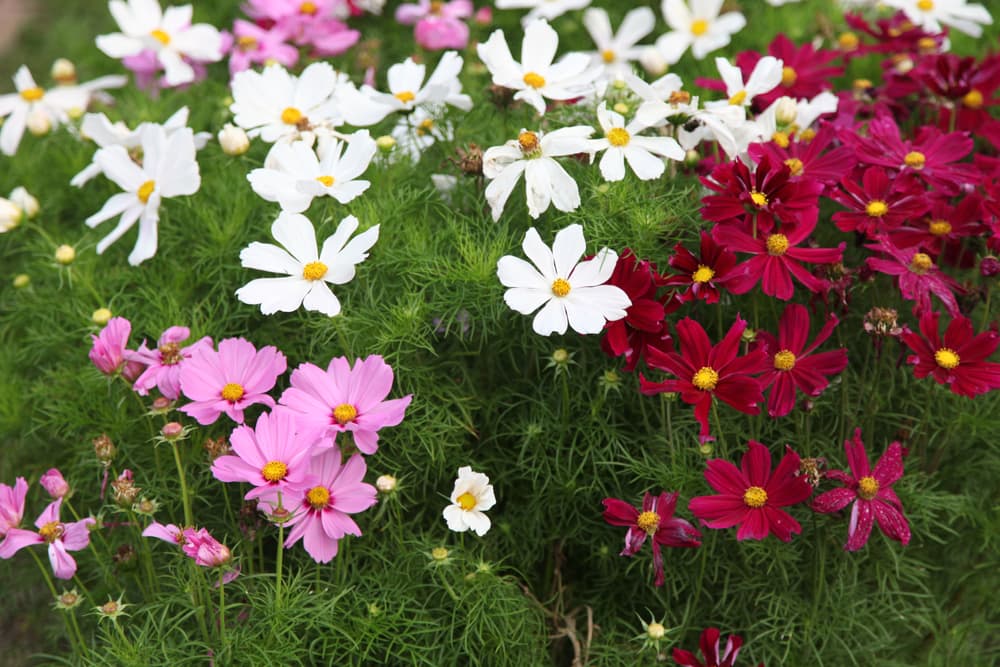
Garden cosmos, C. bipinnatus, is a half-hardy annual, though it is common for the plants to self-seed in many situations and so it is common for them to return over a number of years.
Cultivated varieties come in a range of hues, from white, through pink, to deep purple – this is a common garden plant for the UK.
C. sulphureus

Another cosmos common in UK gardens is C. sulphureus, ‘yellow cosmos’.
This is another half-hardy annual with flowers in many warm sunlit colours of yellow, orange and red.
Their height can vary considerably, and there are some dwarf forms.
C. atrosanguineus

The perennial C. atrosanguineus (otherwise known as ‘chocolate cosmos’) is not reliably hardy in UK gardens, but can be overwintered successfully in some areas – provided the base of the plant is covered with a 15cm thick mulch of straw, dry leaves, or other such material to protect it from the cold.
It is safest to grow these plants in pots and bring indoors over winter, or overwinter cuttings.
It has fragrant flowers, with a similar aroma to chocolate.
Why Grow Cosmos?
Of course cosmos of the types mentioned above are great ornamental plants – chosen for their attractive blooms that can really brighten up a garden.
You can not only enjoy the blooms in your garden, but also inside your home, as these can also make excellent cut flowers.
But aesthetics are not the only reason cosmos could be a good idea where you live.
The main reason why cosmos can be a wonderful garden plant is that the flowers are in bloom for a relatively long period, and are great for attracting a wide range of beneficial insects to your garden.

They will attract bees, butterflies and other pollinators; whilst also attracting predatory insects like ladybirds and hover-flies which eat aphids and other pest species and help to keep their numbers in balance.
The plants themselves are also rarely troubled by pests or disease, and so can be a very useful plant for those who want to enjoy a relatively low-maintenance garden.
They can thrive easily even in relatively difficult growing conditions, and as you will find out below, there are plenty of places you could potentially plant them.
Things are made even easier by the fact that when they are grown in the right conditions, annual cosmos will often readily self-seed – so you can sow them once and expect them again the following year without any extra work on your part.
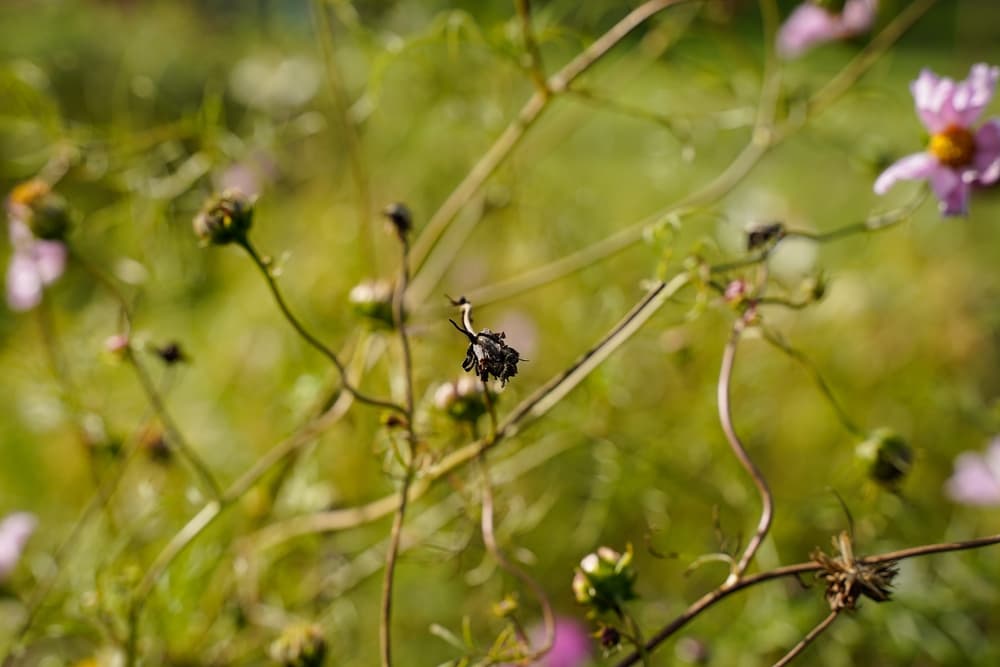
You can also very easily collect the seeds from open-pollinated cosmos to sow yourself the following year. Note, however, that hybrid cultivars will not usually be ‘true to type’, so what the seeds will grow into can be something of a lottery.
One final thing to note is that if you choose organic seeds, and cultivate your flowers without the use of harmful pesticides or fertilisers, the pretty petals of C. sulphureus flowers can also be eaten.2Cosmos Edible Flowers. (n.d.). Nurtured in Norfolk. Retrieved March 14, 2023, from https://nurturedinnorfolk.co.uk/product/cosmos-edible-flowers/
They can be added to brighten up a mixed summer salad.
Choosing Cosmos
There are, as mentioned above, a wide range of varieties and cultivars of cosmos to choose from.

C. bipinnatus and C. sulphureus provide many of the flowers that are most commonly grown in UK gardens.
Some cosmos to consider are:
- C. bipinnatus ‘Apollo White’
- C. bipinnatus ‘Xanthos’
- C. bipinnatus ‘Apollo Carmine’
- C. bipinnatus ‘Apollo Pink’
- C. bipinnatus ‘Sensation Pinkie’
- C. bipinnatus ‘Rubenza’
- C. bipinnatus ‘Dazzler’
- C. bipinnatus ‘Picotee’
- C. bipinnatus Sonata Series
- C. sulphureus ‘Ladybird’ (Mixed)
Of course, there are plenty more options to choose from, including the perennial chocolate cosmos.

If you are looking to take advantage of the plant’s ability to attract and benefit pollinators, then single-flower type cosmos are best, though there are also double-flowered cultivars to consider for ornamental blooms.
How To Grow Cosmos
Soil Requirements
Cosmos will grow well in most typical garden soils, as long as they are in full sun, and as long as the ground does not get too damp and waterlogged.
Though they can cope with relatively dry and low-nutrient soils, they will not like a very dry, very poor site – and they certainly won’t thrive in heavy, wet soils.
As long as the soil is moist but free-draining and there is full sun, your plants should do well – just keep them out of shade.
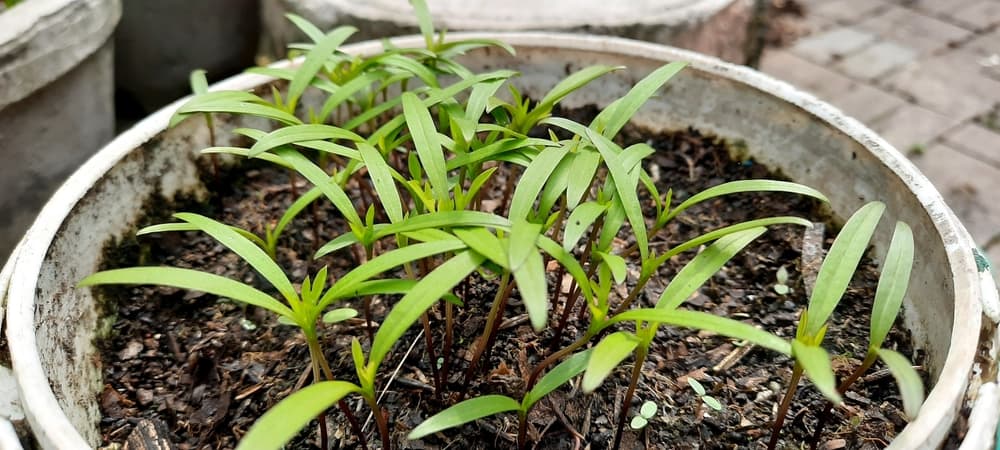
Remember, these plants are native to much warmer climes.
If you do have heavy soil or struggle to find a suitable spot, it is also worthwhile considering that you can also grow shorter cultivars in containers.
Companion Planting
In terms of companion planting, cosmos can be a great choice for scattering throughout or around the edges of your vegetable plot.
Since they attract pollinators, they can often work well for polyculture planting schemes – perhaps alongside other great flowers for your kitchen garden including marigolds, calendula, borage, nasturtiums etc.
Cosmos look great in many ornamental schemes, especially, arguably, in meadow-style planting – perhaps alongside Verbena bonariensis, Nicotiana, and wispy ornamental grasses, for example.
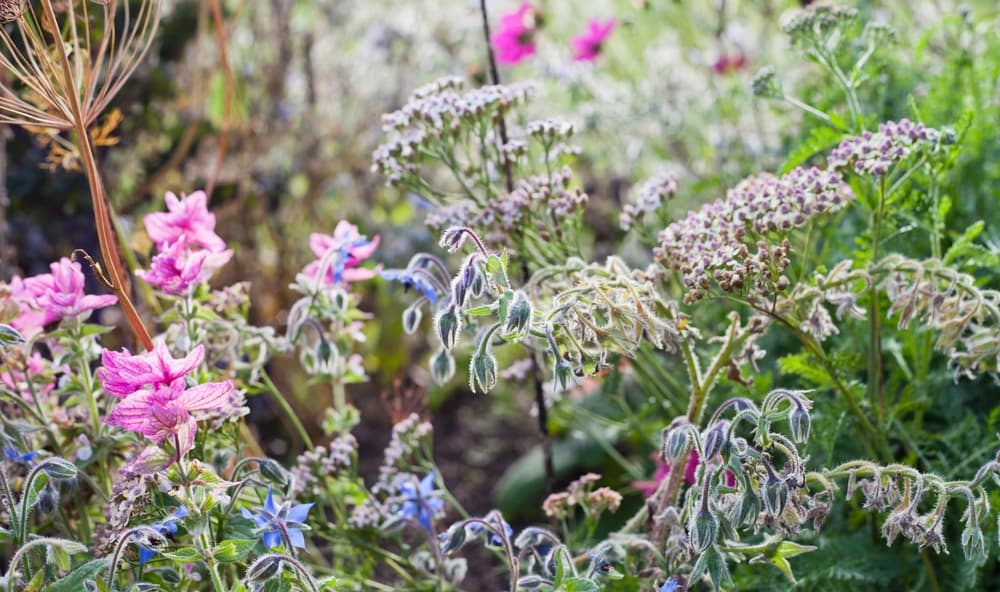
Cosmos can also work well with other showy blooms like dahlias, or zinnias, for instance, in an ornamental border or planter.
From Seed
Cosmos seeds are sown in spring.
You can direct sow the seeds where they are to grow from later in spring, or you can start them in soil blocks, plugs, modules or small pots filled with free-draining seed compost in early spring.
See our guide to sowing for more information.
Planting Out
If you do sow in pots, pot on the seedlings as soon as they are large enough to handle, then plant them out in late April or May after the last frost date in your area.
If you are growing taller cultivars, these should ideally be grown in a more sheltered position; even where they are, they may still require staking or some other form of support.

In order to avoid damage to root systems, it is a good idea to have supports in place before you plant out your cosmos.
In certain areas, it may also be a good idea to provide slug protection for young plants just after they are planted out.
Long term, the best way to control slugs in your garden is to boost natural biodiversity and encourage plenty of the wildlife that eats them.
Cosmos Care
As mentioned above, cosmos are relatively low-maintenance plants and will require little care.
Often they can bloom from June right through to the first frosts in autumn.
Watering
They will only need watering in dry conditions, and should flower over a long period with little work.
Note: remember that if you are growing in containers rather than in the ground you will usually need to water your plants more frequently.
Feeding
In order to ensure that the cosmos you are growing flower well, it can be a good idea to feed them with an organic liquid plant feed a few times during the summer months, though this is not an absolute necessity and often cosmos will flower pretty well without any such intervention.
Deadheading
As with many other flowering plants, it is also a good idea to deadhead regularly in order to keep the plants flowering over as long a period as possible.

Of course, you can also take the blooms to use as cut flowers in your home, and perhaps even, if you are growing organically, harvest a few of the petals for salads.
Overwintering
At the end of the season, as seeds form, you can leave the plants to self-seed naturally, or you can collect the seeds from annual cosmos varieties to plant next year.
If you are growing the perennial chocolate cosmos, then you can divide the tubers.
As mentioned above, these will need winter protection, and in cooler and more northern areas, it may be best to lift the plants for storage over the winter months, so they can be overwintered indoors.
When you lift the plants for storage, this would be a good time to propagate the mature specimens by tuber division.
Propagating
The chocolate cosmos, Cosmos atrosanguineus, can be propagated by basal cuttings,” says Master Horticulturist Peter Lickorish.
“These are harvested in the spring as new growth appears.
“Thoroughly water the plant about an hour beforehand.
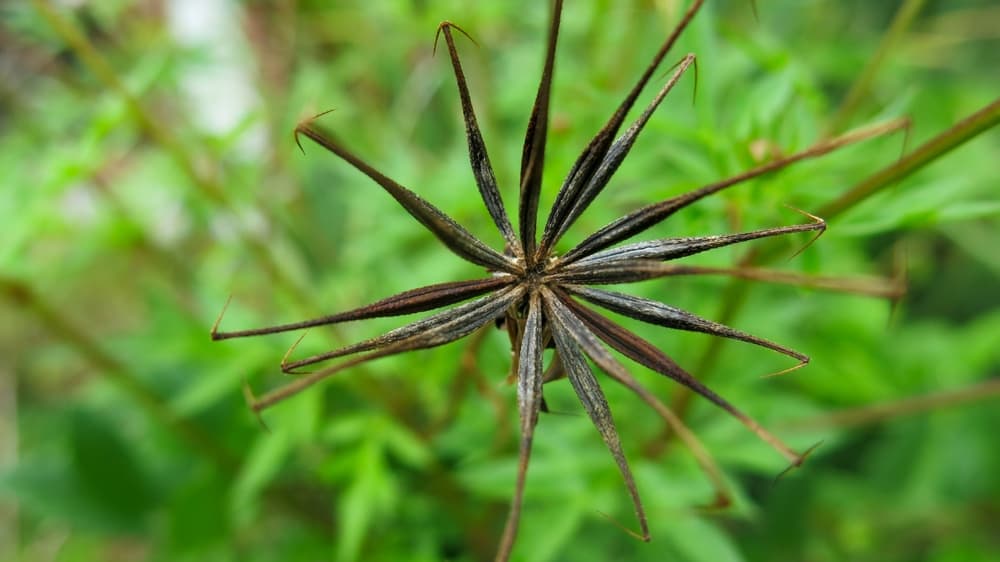
“Then take a third of the new shoots, and cut cleanly to soil level with a knife or secateurs. Place them immediately, half their length deep, in pots of moist compost.
“Given regular watering, a cool position indoors out of direct sunlight, they should root within a couple of weeks.”
By now, you should see more clearly why cosmos can be such great (and pretty easy) flowers to grow, and perhaps you will consider growing some in your garden.
References
- 1Cosmos. (n.d.). Kew Royal Botanic Gardens. Retrieved March 14, 2023, from https://powo.science.kew.org/taxon/urn:lsid:ipni.org:names:8410-1
- 2Cosmos Edible Flowers. (n.d.). Nurtured in Norfolk. Retrieved March 14, 2023, from https://nurturedinnorfolk.co.uk/product/cosmos-edible-flowers/
